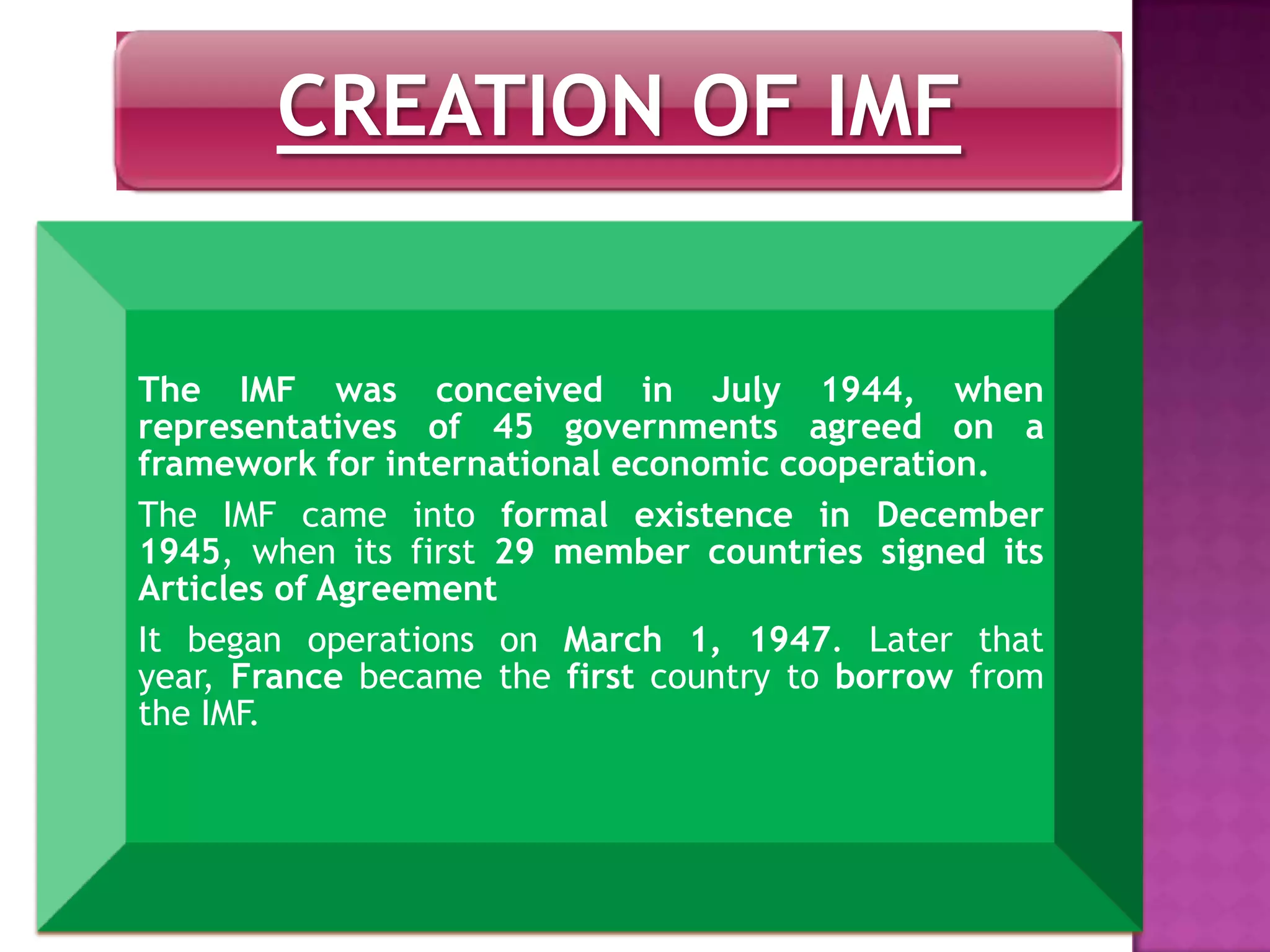The International Monetary Fund (IMF) is an organization of 188 countries that works to foster global monetary cooperation, secure financial stability, facilitate international trade, promote high employment and sustainable economic growth, and reduce poverty. The IMF provides policy advice, research, loans, and technical assistance to help member countries. Key functions include surveillance of members' economic policies, lending to address balance of payment issues, and technical assistance. The IMF has helped Pakistan's economy through various loans totaling billions of dollars since the 1980s.



























